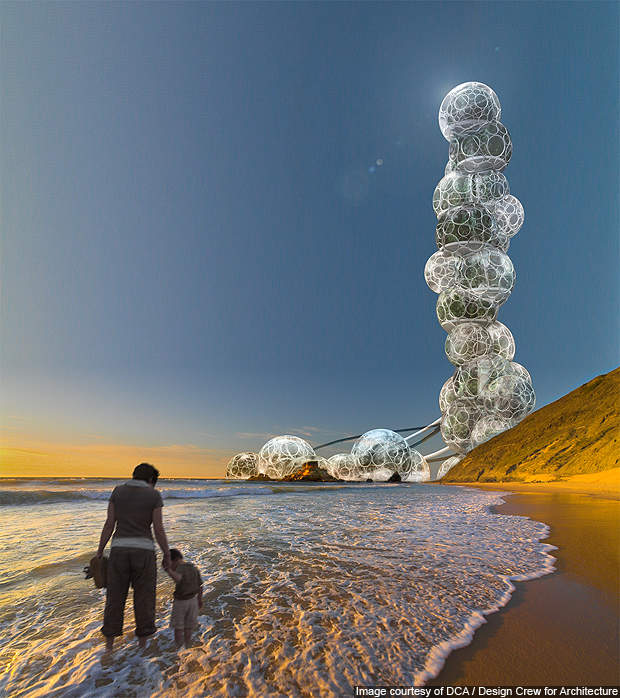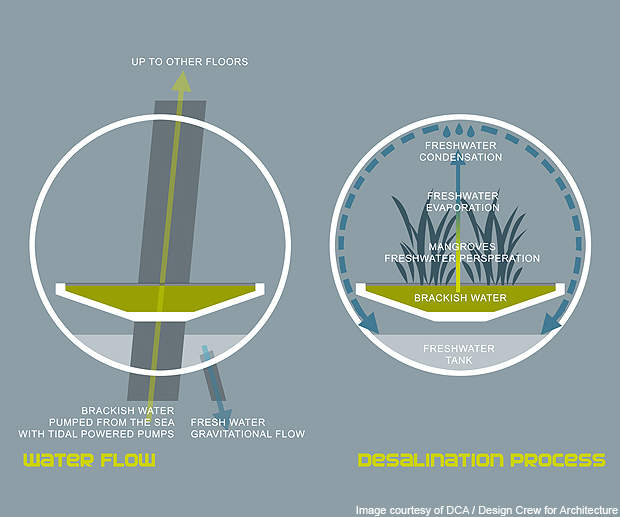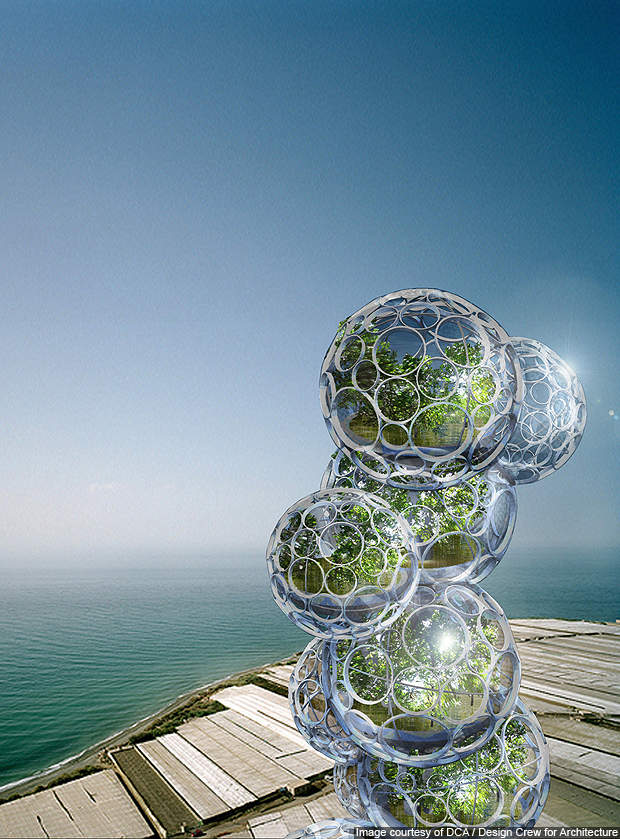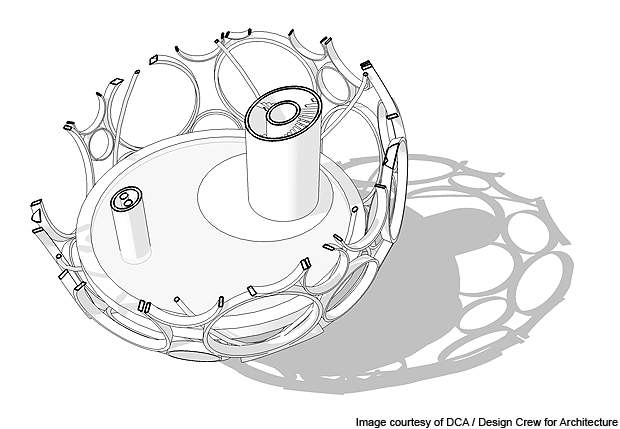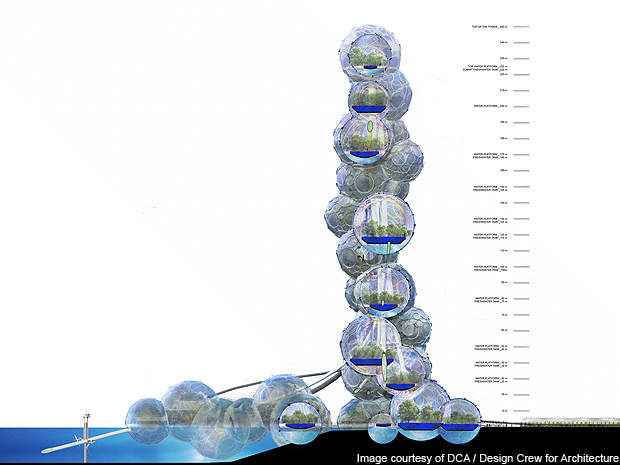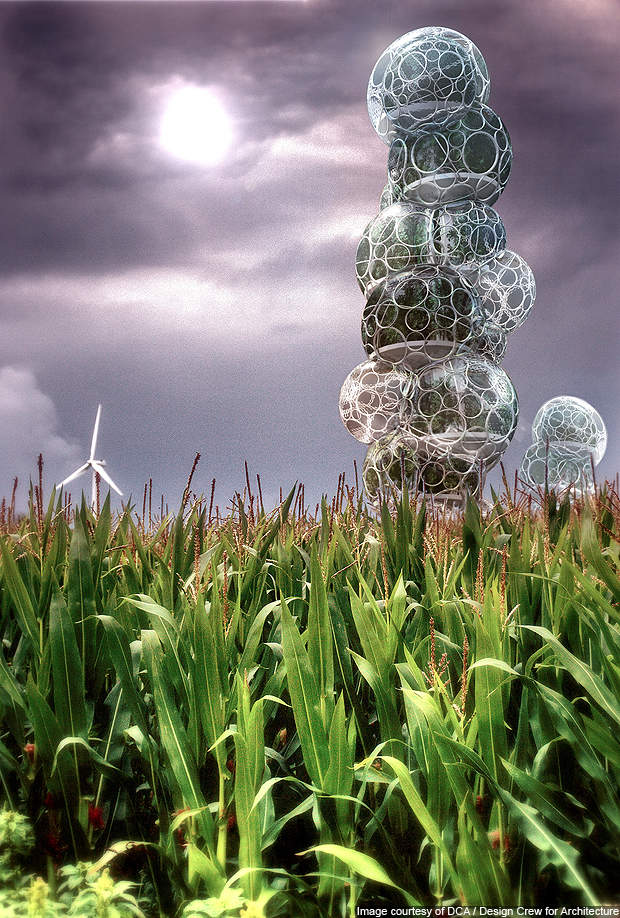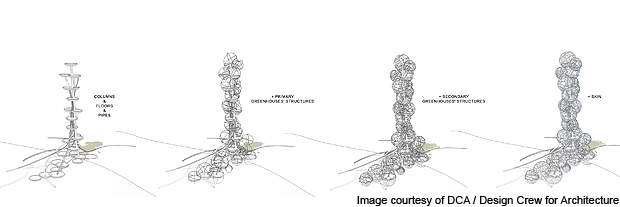The Freshwater Factory or Evolo is a water-generating skyscraper in Almeria, located along the Mediterranean coast in the south-eastern region of Spain. The project was designed for entry into the Evolo Skyscraper Competition 2010.
The competition does not impose any restrictions on the budget, site or programme, but emphasises the theme.
Skyscrapers are iconic as urban structures, while the Freshwater Factory is specially designed to redefine the term ‘skyscraper’, and new usages of these structures. It is a countryside skyscraper designed to combat the future freshwater crisis.
The Freshwater Factory Almeria was designed by the French architectural firm Design Crew for Architecture (DCA). It received a special mention in the Evolo competition in March 2010.
Freshwater Factory design
The Freshwater tower is assembled from bubble-shaped structures designed to desalinate the brackish water from the Mediterranean Sea into freshwater.
It is a 280m-tall structure with several circular tanks. These are arranged vertically to reduce space density.
The tanks, in turn, are housed in spherical greenhouses. The tanks are filled with brackish water and mangroves are planted in them. Mangroves grow in brackish water and also have the attribute of sweating freshwater.
Sea water is brought up and pumped to all the tanks in the skyscraper through tidal energy powered pumps. The water is distributed throughout the tanks using a water pipe network.
The mangroves thus draw the brackish water, while perspiring freshwater from their leaves. The perspired freshwater evaporates into the spherical greenhouses. The vapour then condensates into dew and accumulates on the spherical plastic wall of the greenhouse by night. The freshwater is then collected into storage tanks. The storage tanks are located at a higher altitude, which allows direct distribution of the freshwater to the nearby farm land via gravity.
The Freshwater Factory has a total surface area of 1ha available for cultivation of the mangroves. The area enables plantations in the tower to produce about 30,000l of freshwater every day, this amount of freshwater is sufficient for irrigation of 1ha of tomato field a day.
Structure
The Almeria Freshwater skyscraper is a concrete structure. It has the traits of a basic building with structural posts and floors arranged logically. The posts are designed to be larger than the ones in common skyscrapers and house the water pipes and circulations. The floors act as horizontal bracing.
The greenhouses of the water-generating skyscraper are independent structures with their own supportive systems. They are made of light metal and do not rely on the concrete structure for support.
The big rings provide traction to the primary structure, while the smaller rings offer compression to the secondary structure.
This process helps the greenhouses to form independent self-supporting structures.
Inspiration
The greenhouses concept was inspired by the geodesic dome called Climatron located in the Missouri Botanical Garden, built in 1960.
Purpose of the design
The Almeria province in Spain has more than 30,000ha of cultivated land requiring about 180bn l of water for irrigation annually. The earth is composed of 97% of salted water, 2% of ice and only 1% freshwater. Worldwide freshwater consumption for farming is 70% of this.
It is estimated that freshwater crisis might affect about 50% of the worldwide population by 2030, according to the World Water Council and the UNO.
The proposed Freshwater skyscraper is a futuristic, economical and sustainable concept to naturally generate irrigation water. The tower is suitable for arid and sunny climatic regions around the world.

